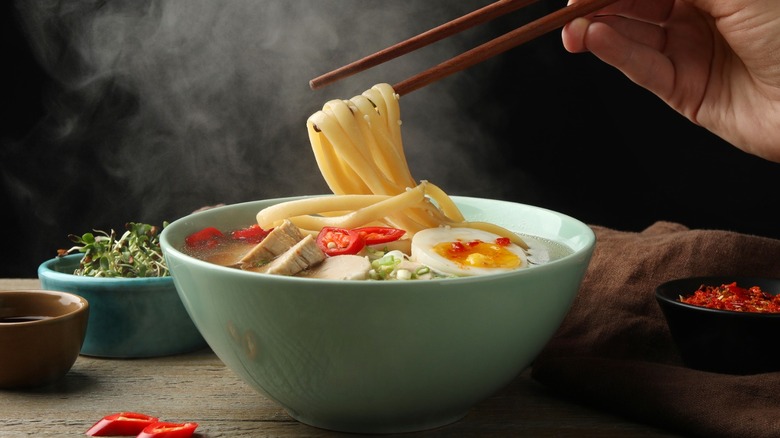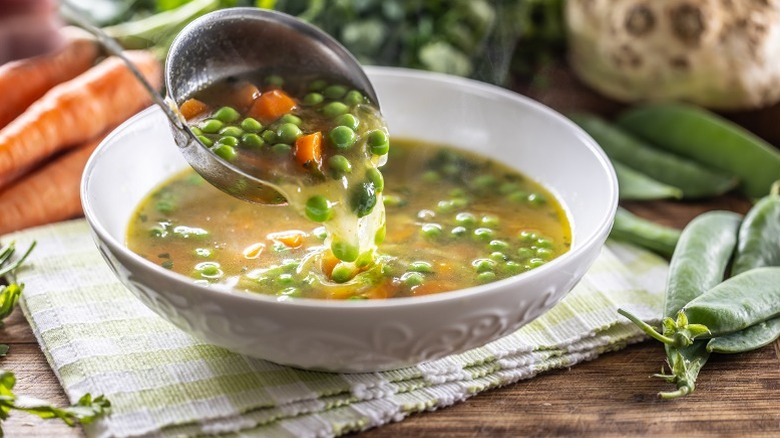The Temperature You Should Serve Soup Depends On The Type
We may receive a commission on purchases made from links.
One of the biggest mistakes people make when cooking soup is forgetting how to serve it. Gauging portions and temperatures can be tricky, especially when preparing a meal for a crowd. After all, there's a fair chance you won't be serving guests immediately when it's ready (not without some help, at least).
For some tips on how to bring the best bowl to any party, Chowhound spoke with Jessie-Sierra Ross, owner of the Straight to the Hips, Baby blog and author of the cookbook "Seasons Around the Table: Effortless Entertaining with Floral Tablescapes & Seasonal Recipes." When it comes to serving brothy soups, her advice is to first sterilize it by heating it — 190 to 210 degrees F should do the trick. Then, let it cool down to somewhere in the 140 to 160 degrees F range before plating. "This is hot enough to give you that warm comforting feeling, but not so hot as to burn your tongue!" Ross told us in our exclusive interview.
Soups with clear or semi-clear broth (such as chicken noodle, beef vegetable, or Italian wedding soup with meatballs) should meet the bowl with a gentle steam, not boiling right out of the pot. A burnt tongue makes it hard to enjoy the rest of the dinner you worked hard to prepare. Luckily, you can take the guesswork out of temperatures by investing in a food-safe thermometer, like Alpha Grillers' meat thermometer, that gives an instant read.
The ideal way to portion and serve soup
When serving cream-based soups like clam chowder, Jessie-Sierra Ross said 140 degrees F is the way to go (around the temperature you'd drink a coffee). "My favorite example is a luxurious Apple & Roasted Sugar Pumpkin Velouté with a candied pecan garnish," she told us in our exclusive chat. "The natural sweetness from the roasted pumpkin can only be really enjoyed when it's not served boiling hot! These types of soups are best served between 130 degrees F to 150 F."
Some fruit- and vegetable-heavy recipes, like creamy potato leek soup or pumpkin curry soup, can be enjoyed at room temperature or lower. Chilled tomato gazpacho, cold beet borscht, and Korean cold noodle soup (mul naengmyeon) are delicious and refreshing dishes that shine at a chilly 40 degrees F — perfect for a hot summer's day. No matter what soup you serve, keep in mind that anything above 160 degrees F is a burn risk. Once you nail the temperatures, you'll be ready to plate each dish like a pro.
Ross prefers to keep portions to 1 cup (8 ounces) per person, taking into account solid ingredients. For example, a hearty tomato and bacon soup is going to be heavier than most clear vegetable noodle soups. "This amount is a great introduction to the meal and can set the stage for the flavors to come without filling your guests up too quickly," she advised. "If the soup course is playing a starring role as a casual main course, I'd bump it up to almost two cups."

